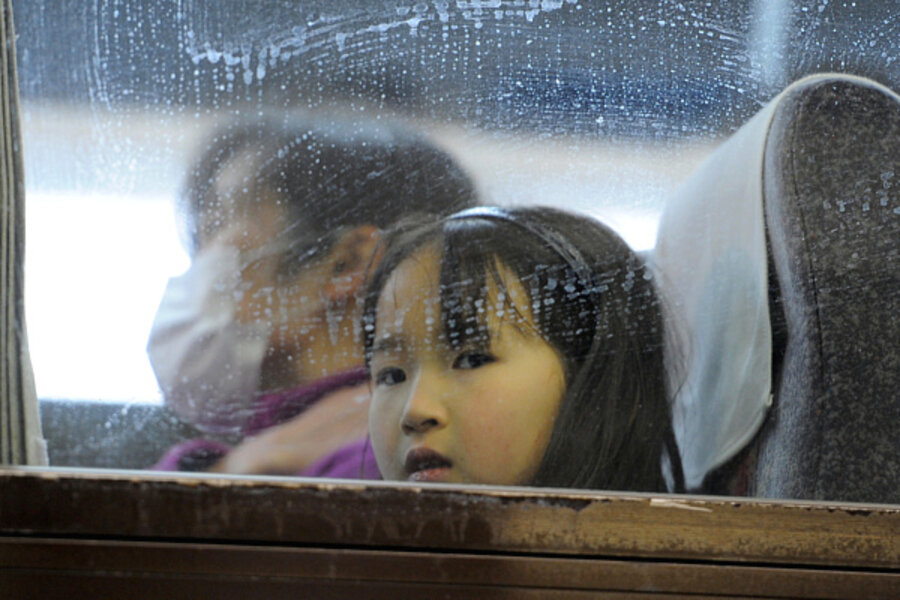Fukushima nuclear crisis: How serious is the radiation threat?
Loading...
| Washington
Hazardous levels of radiation have leaked from a damaged nuclear reactor in Japan. On Tuesday, Japanese authorities ordered 140,000 people to seal themselves indoors to avoid exposure. The situation at the Fukushima I nuclear plant, along Japan’s northeastern coast, certainly sounds dire.
How serious is the threat?
Well, radioactivity has indeed escaped, but its effects on humans should be limited.
The big “if” is what happens next. Workers are fighting desperately to keep the reactors’ fissile material cool and avoid further meltdowns. More releases might come at any time.
The radiation detected so far was a one-time spike that dissipated over hours, according to the International Atomic Energy Agency. Readings peaked at 400 millisieverts (mSv) per hour between Fukushima I reactor Nos. 3 and 4, following an explosion and fire on Monday at No. 3, according to the latest report from the International Atomic Energy Agency.
At midnight Tuesday UTC, readings had fallen to 11.9 mSv per hour, said the IAEA. Six hours later they had fallen to 0.6 mSv.
Exposure to 400 mSv per hour would certainly be a matter for grave concern. By way of contrast, the current average limit of exposure for nuclear plant workers is a total of 20 mSv, not per hour, but over an entire year, according to the World Nuclear Association (WNA), a trade group of industry professionals. Health effects are evident at exposures of 100 mSv per year.
However, a single dose of 1,000 mSv can induce temporary radiation sickness. Dangers escalate rapidly from there. A single dose of 5,000 mSv would be fatal to half those receiving it, according to the WNA.
Naturally-occurring radioactivity affects everyone on earth to varying degrees. Varying amounts of uranium and thorium in soil and stones emit radiation. Cosmic rays entering Earth’s atmosphere from outer space bathe humans in radiation, points out an IAEA factsheet on the subject.
A typical person is exposed to about 2.4 mSv per year of natural radiation, according to the IAEA, though this amount can vary quite a bit depending on where the person lives.
However, the radiation released in Japan already exceeds the worst-case-scenario design specifications for US reactors, points out Ed Lyman, a senior scientist in the Global Security Program at the Union of Concerned Scientists.
The US Nuclear Regulatory Commission requires applicants for a nuclear plant license to show that their proposed reactors can suffer bad accidents yet not emit radiation more than the equivalent of 250 mSv over two hours, at the plant boundary.
“In comparison, the dose rate near reactor Unit 3 at Fukushima Dai-Ichi [Fukushima I] has reportedly reached 400 mSv per hour. The Fukushima accident is therefore now a beyond-design-basis accident, at least in NRC terms,” writes Dr. Lyman.





